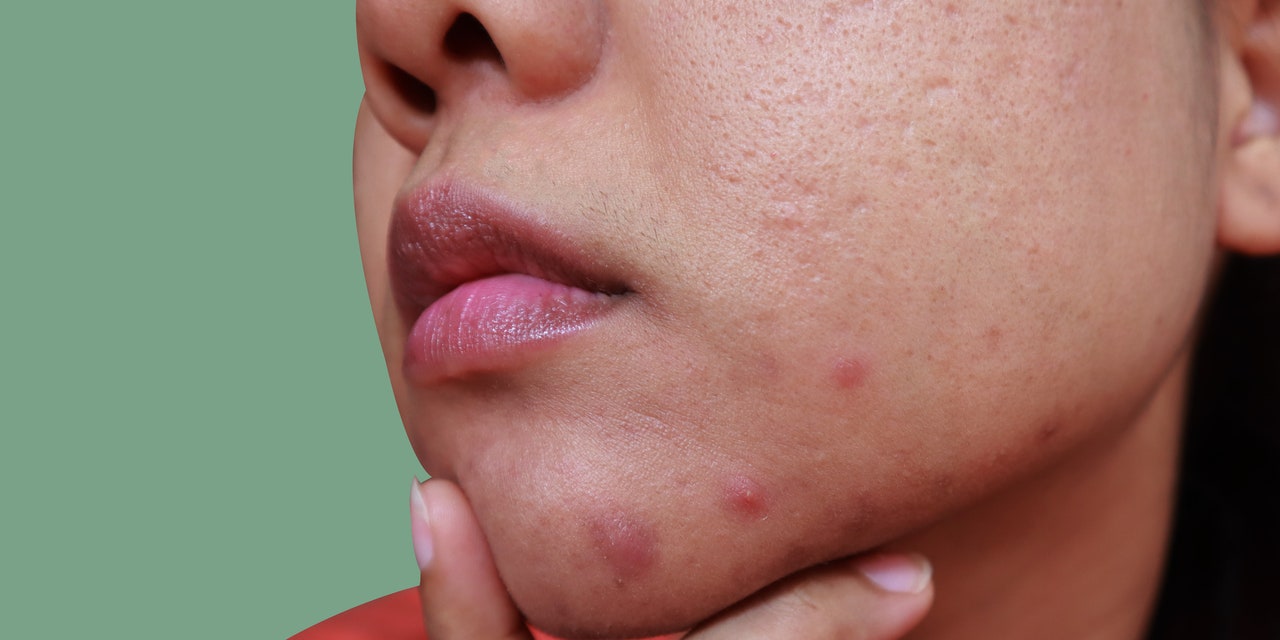Chances are, you’ve experienced the fresh hell that is waking up with an ultra-inflamed eyesore of a zit—or a crop of pesky pimples—smack dab on your chin. It’s as if these face invaders came out of nowhere, and you’re not alone in wondering what the heck causes chin acne to rear its ugly head(s).
Regardless of where your pimples are popping up (and whether you’re dealing with whiteheads, blackheads, pustules, or cysts), acne can be influenced by a variety of biological and environmental factors, Jenny Liu, MD, board-certified dermatologist and assistant professor at the University of Minnesota, tells SELF. Sometimes, you can banish chin zits with simple adjustments like washing your pillowcase more regularly or cleansing your face after brushing your teeth (because, yes, leftover dribbled toothpaste, especially if it contains fluoride, can irritate the skin and cause breakouts in some people), Dr. Liu says.1
But more often than not, the culprit is deeper-rooted and seemingly out of our control, she adds. The frustrating issue can depend on things like excess oil production (the chin area is loaded with tons of sebaceous glands that can overproduce oil and clog your pores) and hormone fluctuations.2 3 Oh, and let’s not forget straight-up genetics!4
If you’re reading this, you may already know that acne is annoyingly complicated, and there likely isn’t just one factor causing your chin pimples. That said, there’s a reason we dedicated an entire article to the bumps creeping along your chin and jawline, and with the assistance of three dermatologists, we’re here to break down those breakouts and (hopefully) help you get rid of them.
What causes chin acne, specifically?
If only there was one tried and true answer—and solution—right? Unfortunately, it’s not that simple: All the derms we spoke with agreed that there’s no sole trigger for breakouts on a specific part of the face. What experts do know: “Blemishes on the chin and jawline area, compared to other parts of the body, are typically characterized by inflammation, which makes them appear as papules and pustules instead of smaller, less-inflamed clogged pores,” Marisa Garshick, MD, a dermatologist at MDCS Dermatology and clinical assistant professor at Cornell University, tells SELF. And there are some common causes of these angry chin spots:
READ RELATED: The Best Ways to Reapply Sunscreen Over Makeup, According to Dermatologists
Stress
Not only can mental tension leave you feeling anxious and overwhelmed, but it can take a toll on your skin health, too. In short, that’s because the body responds to stress by releasing a hormone called cortisol.5 Too much cortisol can increase inflammation—your immune system’s response to a perceived threat—and make your skin more sensitive and tender, Mara Weinstein Velez, MD, a dermatologist at the University of Rochester Medical Center, tells SELF.6
Yep, that means it can also cause breakouts. “When you’re under stress, your sebaceous glands also produce more oil, which can clog your pores and contribute to whiteheads, blackheads, or other signs of congestion,” Dr. Weinstein Velez says.4 If you’re someone who has struggled with acne consistently for years, there are likely more internal factors at play (which we’ll get to in a moment). But if you’re usually not one to break out and all of a sudden—after that difficult work project, for instance, or a few sleepless nights—you’re surprised by a giant volcano erupting on your chin, that’s a telltale sign of a stress zit, Dr. Weinstein Velez adds.
Other hormone fluctuations
When you think of hormonal acne, you might picture a pimple-faced teenager in the midst of puberty. It’s a common misconception that the frustrating days of textured and bumpy skin end with high school graduation, though. Adults, too, deal with breakouts. Some people may even notice acne in their 20s for the very first time.






